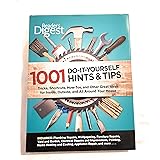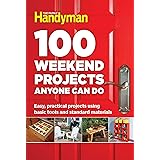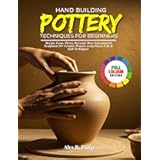Beyond the Basics: Mastering Truly Easy Crafts You’ll Adore
For many aspiring creators, the world of crafting often presents a daunting challenge. The allure of beautifully handcrafted items is undeniable, yet the perceived complexity, time commitment, and specialized skills required can quickly stifle enthusiasm. Numerous online tutorials showcase intricate projects that, despite their initial appeal, prove to be anything but “easy” for the average person. This disconnect frequently leads to frustration, abandoned projects, and a growing skepticism about the feasibility of genuinely simple yet satisfying DIY endeavors.
However, the pursuit of accessible creativity does not have to be a Sisyphean task. The accompanying video, “25 Easy Crafts You’ll Actually Want to Make Yourself,” serves as a testament to the fact that compelling and aesthetically pleasing projects are indeed within reach for everyone, regardless of their prior experience. This article aims to delve deeper into the philosophy behind these simple, high-impact crafts, offering a comprehensive guide to understanding not just the ‘what’ but also the ‘why’ and ‘how’ of achieving remarkable results with minimal effort. Consequently, we explore the principles that transform basic materials into cherished items, proving that genuine ease and impressive outcomes are not mutually exclusive in the realm of DIY.
The Underrated Art of Accessible Crafting Projects
Accessible crafting transcends mere simplification; it represents a deliberate design philosophy focused on maximizing creative output while minimizing technical barriers. This approach prioritizes universal material availability, straightforward execution methods, and projects that yield tangible, desirable results. Consequently, the emphasis is placed on immediate gratification and the intrinsic joy of creation, rather than prolonged, complex processes. True easy crafts are engineered for success, fostering confidence and encouraging further exploration into the vast world of DIY.
Understanding the core tenets of accessible crafting empowers individuals to identify and embark upon projects that genuinely align with their skill level and time constraints. Furthermore, it shifts the focus from aspirational, expert-level endeavors to practical, everyday creativity that enriches daily life. The goal is not to produce museum-quality pieces, but rather functional, beautiful, and personalized items that bring satisfaction and express individual style. This subtle yet significant paradigm shift is crucial for fostering a sustainable creative habit.
Unlocking Your Creative Potential with Simple DIY Projects
The beauty of simple DIY projects lies in their ability to democratize creativity. Individuals often underestimate their innate capacity for artistic expression, believing that sophisticated techniques are prerequisites for crafting something worthwhile. However, many stunning pieces can be achieved through fundamental actions like cutting, gluing, painting, and basic assembly. Mastering these elementary operations is the cornerstone of unlocking a vast array of creative possibilities, building a foundational skillset that can be incrementally expanded over time.
Moreover, embracing simple projects reduces the entry barrier posed by expensive tools or specialized equipment. Many “easy crafts” can be executed using common household items or inexpensive materials readily available at local craft stores or even dollar stores. This economic accessibility further encourages experimentation and minimizes the financial risk associated with trying new hobbies. Consequently, focusing on fundamental techniques and readily available resources empowers more individuals to engage in productive and enjoyable creative pursuits.
Key Principles for Successful Easy Crafts and Handmade Decor
Achieving genuinely desirable results from easy crafts requires adherence to a few fundamental principles. These guidelines ensure that even the simplest projects boast a professional finish and lasting appeal. Firstly, **material selection** is paramount; opting for quality, fit-for-purpose materials significantly impacts the final aesthetic and durability. Substandard glues, thin paints, or fragile base materials can compromise even the most well-executed design. Consequently, investing slightly more in foundational components often yields substantially better outcomes.
Secondly, **attention to detail** elevates a simple craft from homemade to handmade chic. This includes precise measurements, neat edges, smooth application of finishes, and thoughtful color coordination. Even minor imperfections can detract from the overall presentation, whereas meticulous execution enhances perceived value. Furthermore, understanding basic **design principles** such as balance, contrast, and focal points, even implicitly, can transform a collection of materials into a cohesive and appealing object. These principles guide the arrangement and combination of elements to create visual harmony.
Thirdly, **patience and process adherence** are critical. While “easy” implies quick, it does not mean rushed. Allowing adequate drying times, following instructions sequentially, and taking breaks when frustration mounts are essential for preventing errors and achieving a polished finish. Moreover, **embracing imperfection** to a degree is also vital; handmade items possess a unique charm derived from their artisanal nature. The goal is not mechanical replication but soulful creation, where minor variations contribute to character rather than detract from quality. Adopting these principles ensures that your easy DIY projects are not merely completed but are genuinely cherished and admired.
Sustainable Crafting: Upcycling and Repurposing Ideas
The intersection of easy crafting and sustainability offers a compelling avenue for creative expression. Upcycling and repurposing materials transform discarded items into valuable objects, reducing waste while fostering innovation. This approach aligns perfectly with the ethos of accessible crafting, as many common household discards—like glass jars, tin cans, old textiles, or cardboard—serve as excellent foundations for simple yet impactful DIY projects. Consequently, individuals can contribute positively to environmental conservation while engaging in fulfilling creative activities.
Consider the humble glass jar, often destined for recycling. With a coat of chalk paint, some twine, and perhaps a stenciled design, it can be transformed into an elegant vase, a rustic candle holder, or organized storage for craft supplies. Similarly, old T-shirts can become braided rugs, tote bags, or cleaning rags, extending their utility far beyond their original purpose. Wooden pallets, often discarded by businesses, are frequently repurposed into furniture, wall art, or garden planters with minimal modification. These transformations exemplify how basic materials, combined with imaginative application, can yield practical and attractive items. Furthermore, exploring the possibilities of upcycling encourages a resourceful mindset, viewing potential waste not as an endpoint but as a beginning for new creations.
Essential Tools and Materials for Your Crafting Inspiration
Embarking on a journey of easy crafts does not necessitate a vast, expensive arsenal of tools. In fact, many projects can be completed with a surprisingly minimal investment. A well-curated basic toolkit and a selection of versatile materials are far more effective than an abundance of specialized items that rarely see use. Prioritizing quality over quantity in these essential components will significantly enhance the crafting experience and the longevity of your creations. Consequently, a thoughtful approach to material and tool acquisition is highly recommended for any aspiring crafter.
Basic Crafting Toolkit:
- **Sharp Scissors:** Indispensable for cutting paper, fabric, and various other materials with precision.
- **Craft Knives/Utility Blades:** Essential for clean, intricate cuts on thicker materials, paired with a self-healing mat.
- **Various Adhesives:** A robust selection including white craft glue, hot glue gun with glue sticks, and possibly a strong adhesive like E6000 for specific material bonds.
- **Ruler and Measuring Tape:** Crucial for accuracy, ensuring symmetrical and well-proportioned designs.
- **Pencils/Markers:** For marking, outlining, and adding detail to projects.
- **Paint Brushes and Sponges:** A variety of sizes for different painting applications, from broad strokes to fine details.
Versatile Craft Materials:
- **Cardstock and Construction Paper:** Excellent for a multitude of paper crafts, from card making to decorative elements.
- **Yarn, Twine, and Rope:** Perfect for adding texture, creating macramé, or securing components.
- **Acrylic Paints:** Available in a vast spectrum of colors, suitable for wood, paper, fabric, and more.
- **Fabric Scraps:** Repurpose old clothing or buy small remnants for quilting, embellishments, or small sewing projects.
- **Glass Jars and Bottles:** Ideal for upcycling into vases, storage, or decorative items.
- **Air Dry Clay:** Simple to work with, allowing for sculptural elements without the need for a kiln.
- **Washi Tape:** A decorative and easy-to-use adhesive for adding patterns and borders.
- **Beads and Embellishments:** For adding sparkle, texture, and personalized touches.
Elevating Your Easy Crafts with Design Flair and Personalization
While the focus remains on “easy,” injecting design flair and personalization transforms a basic craft into something truly special and reflective of individual taste. This enhancement doesn’t require complex techniques but rather thoughtful consideration of aesthetics and purpose. Moreover, understanding how to apply simple design principles can dramatically elevate the perceived value and appeal of any handmade item. Consequently, a deliberate approach to design ensures that your easy crafts are not just functional, but also beautiful and distinctive.
Consider the impact of **color palette selection**. Even a simple painted item can be striking if the colors are harmoniously chosen or intentionally contrasting. Utilizing a limited palette (e.g., two or three complementary colors) often results in a more sophisticated look than a chaotic mix. Furthermore, **texture integration** can add depth and interest; combining smooth surfaces with rough twine, soft fabric, or gritty paint creates a dynamic tactile experience. For instance, a simple wooden block can become an elegant decorative piece by adding a layer of textured paint and a minimalist design. The judicious application of these elements can make a significant difference in the final product’s appeal.
Adding a Personal Touch:
- **Monograms and Initials:** Stenciling or hand-painting initials adds an intimate touch to gifts or home decor.
- **Thematic Elements:** Tailoring a craft to a specific season, holiday, or recipient’s interest makes it more meaningful.
- **Photographs:** Incorporating personal photos into frames, collages, or decoupaged items creates sentimental value.
- **Hand-Lettering or Calligraphy:** Even rudimentary lettering can elevate a simple sign or label.
- **Customizable Embellishments:** Using beads, charms, or small trinkets that reflect personality or memory.
The Therapeutic Benefits of Engaging in Easy Crafting
Beyond the tangible output, the act of engaging in easy crafting offers profound psychological and emotional benefits. In a world increasingly dominated by digital screens and fast-paced demands, dedicating time to a creative, hands-on activity provides a much-needed respite. This form of active meditation allows individuals to focus solely on the task at hand, effectively reducing stress and anxiety. Consequently, crafting serves as a powerful therapeutic outlet, fostering mental well-being and a sense of accomplishment.
The repetitive motions involved in many simple crafts, such as painting, gluing, or cutting, can induce a meditative state, promoting mindfulness and relaxation. This focused engagement helps to quiet the mind, offering a valuable escape from daily worries. Furthermore, completing a project, no matter how small, triggers a sense of achievement and boosts self-esteem. The tangible evidence of one’s creative efforts provides immediate positive reinforcement, encouraging continued engagement. Studies have consistently demonstrated that creative activities can improve mood, enhance cognitive function, and even alleviate symptoms of depression. Therefore, embracing easy crafts is not merely a hobby but a deliberate investment in personal happiness and mental health.
Moreover, crafting can serve as a conduit for social connection. Participating in craft groups, sharing project ideas, or gifting handmade items fosters community and strengthens relationships. The exchange of creative insights and mutual encouragement creates a supportive environment where individuals can learn and grow together. This social dimension adds another layer of therapeutic benefit, combating feelings of isolation and promoting a sense of belonging. Ultimately, the multifaceted advantages of engaging in simple, enjoyable craft projects extend far beyond the aesthetic appeal of the final product, enriching the lives of creators in numerous invaluable ways. For anyone seeking a rewarding and accessible creative outlet, the realm of easy crafts offers a perfect starting point to explore their innate potential and cultivate a deeper sense of well-being.







